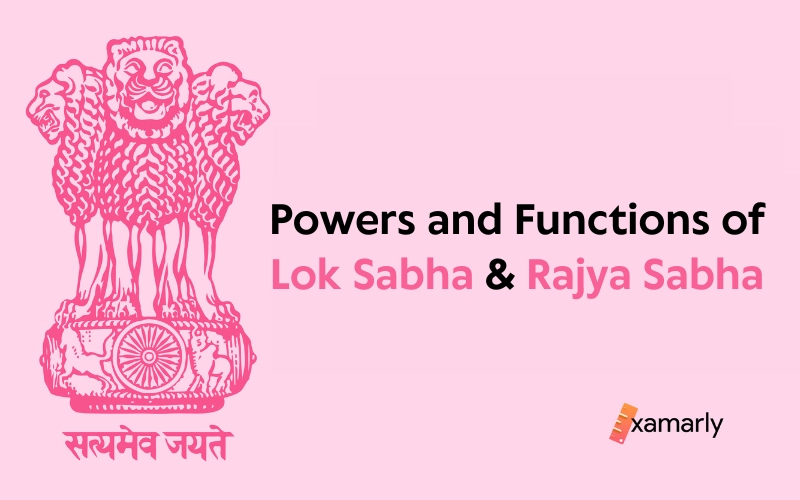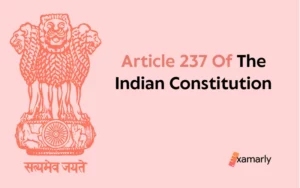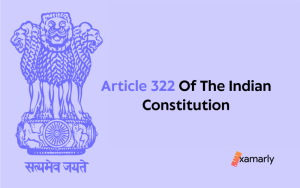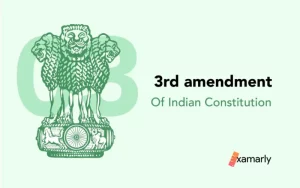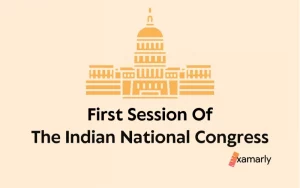Before learning the powers and functions of Lok Sabha and Rajya Sabha, it is important that you know what both houses stand for. These are the two houses of the Indian Parliament. The upper house of the Indian Parliament is called the Rajya Sabha (Council of States) and the Lok Sabha (House of the People) or the Lower House(also the First Chamber or Popular House).
There are 238 members of the Rajya Sabha who are chosen through an indirect election. India’s States and Union Territories are represented in this Upper House. 12 of these 250 members are recommendations made by the Indian president. Members of the Lok Sabha are elected directly to the lower house. Using electoral colleges, these members of parliament represent India’s citizens in accordance with the universal adult franchise.
If you are a UPSC aspirant, you must read this blog and learn about the distinct powers and functions of Lok Sabha and Rajya Sabha as it is one of the most significant concepts in the polity syllabus of the UPSC exam.
The powers and functions of these 2 houses are important in understanding the structure and governance of our democracy. So, let us look into the powers of both separately.
- Powers of Rajya Sabha
- Legislative Powers of Rajya Sabha
- Financial Powers of Rajya Sabha
- Executive Powers of Rajya Sabha
- Amendment Powers of Rajya Sabha
- Electoral Powers of Rajya Sabha
- Judicial Powers of Rajya Sabha
- Special Powers of Rajya Sabha
- Powers of Lok Sabha
- Legislative Powers of Lok Sabha
- Financial Powers of Lok Sabha
- Judicial Powers of Lok Sabha
- Executive powers of Lok Sabha
- Miscellaneous Powers of Lok Sabha
- Difference between both Houses of Parliament
- Conclusion
- FAQs related to the Powers and Functions of Lok Sabha and Rajya Sabha
Powers of Rajya Sabha
It is essential to know the powers and functions of the Rajya Sabha. These can be divided as given below:
Legislative Powers of Rajya Sabha
The Upper House is a powerful legislative body. It has the same powers and functions as the Lower House for all matters except financial matters i.e. finance bills.
The Upper house foresees the introduction of ordinary bills but they cannot become law unless both houses agree. When they disagree, the President may call a joint meeting of the two Houses, which will be presided over by the Lok Sabha Speaker.
If the bill is accepted by the majority of total members of the two Houses, it becomes an Act. If the bill is passed in one House but the other doesn’t look at it for six months, the first House can call for a joint meeting of both Houses.
If the Lower House repasses it but the Upper House still has problems with it, a deadlock ensues. If this deadlock is not resolved for six months, the President calls for a joint session of the two Houses for discussions on matters. After sitting as a joint assembly, the decision of the conference is approved by both Houses.
Financial Powers of Rajya Sabha
Only the Lower House can introduce money bills, which require majority approval from the members present and voting. If advanced by the House of the People, they are sent to the Council of States for that body’s consideration.
Within 14 days, the Upper House must send a money bill back to the Lower House with its decisions. If it doesn’t, the bill immediately becomes a law in the form it was passed in by the Lower House.
In case the Upper House makes any amendments to this money bill, which may or may not be accepted by the Lower House, the Upper House does not have equal financial powers as compared to the Lower House. That is, it has no power to originate money bills or make amendments to them beyond certain limits.
Executive Powers of Rajya Sabha
In contrast to the House of People, the Council of States is not able to compel the council of ministers to resign with a no-confidence vote. There are a number of parliamentary powers granted to its members but they can’t remove the Council of Ministers from office.
That said, they can go ahead and scrutinize the workings of their ministries by criticizing policy decisions, posing supplementary questions, etc.
Amendment Powers of Rajya Sabha
Regarding the Constitutional amendments, both Houses possess the same power. A bill to amend the Constitution may be initiated in either of the Houses of Parliament. Without the amendment being approved by both houses and achieving the required majority, it will not go into effect.
Electoral Powers of Rajya Sabha
Indian President is elected with a majority vote from a committee that includes members of both Houses of Parliament and state legislative assemblies. Two houses of Parliament jointly elect the Vice-President of India. Members can also elect one of their peers to the role of Deputy Chairman.
Judicial Powers of Rajya Sabha
It can start the impeachment process of the President for offenses involving violating the Constitution. Together, two of the Houses can pass a special address calling for the removal of a Supreme Court judge or a judge of any high court.
A simple majority vote in both the Lower House of Parliament and the Upper House of Parliament is all that is necessary to remove the Vice President from their position. The reason for termination is never specified. The Upper House must be contacted and given fourteen days’ notice before a motion to depose the vice president from office is introduced.
Special Powers of Rajya Sabha
- The Exclusive Powers of Rajya sabha is to declare an issue of the State List item as an issue of National Importance:
- With two-thirds of the members’ votes, the Upper House of Parliament can move for a resolution listing a state subject as one of national importance. Such a resolution gives the Union Parliament one year of authority to make laws for that state subject. The same resolution can be brought up again and again by the Rajya Sabha. This is an exclusive power of this House.
- Special Rajya Sabha Powers to Disband or Create an All India Service:
- It has the authority to establish new All India Services. To approve a resolution, it needs the consent of two-thirds of its members. Additionally, the Upper House has the authority to dissolve the current All India Service Commission. One of the unique abilities of the Rajya Sabha is this one.
Powers of Lok Sabha
Now, let us read through the powers and functions of Lok Sabha. It can be categorized as follows:
Legislative Powers of Lok Sabha
Any matter on the concurrent list and union list is subject to Lok Sabha’s legislative authority. Its jurisdiction may include the capitals of the states on the list in an emergency.
Any bill that hasn’t been approved by this house cannot be passed as law. Here, both minor and significant bills may be introduced. The resolution of the Lower House is considered definitive when both chambers of parliament convene jointly.
Financial Powers of Lok Sabha
The Lok Sabha has many different functions. One of them holds the purse strings of the country. This house initiates all bills pertaining to the money. These bills sent must be returned in a time span of 14 days with or without the amendment, which may be approved by the Lower House or rejected.
The bill then becomes law and goes through the executive branch. The House of People also passes the budget and determines how much money is raised.
In financial matters, the Lower House has greater authority than the Upper House. In case of an emergency, it possesses the power to delay the budget session until the next financial year.
Judicial Powers of Lok Sabha
- It possesses the authority to remove the Indian President if they violate the Constitution but can only be removed from office with the support of two-thirds of each house’s members.
- In addition to parliamentary affairs, the Lower House will also examine any evidence brought forth by the Upper House concerning the Vice-President of India.
- In Parliament, both houses can pass a resolution in accordance with the relevant procedure for deposing any judge of the Supreme Court or a State High Court.
Executive powers of Lok Sabha
- This House has oversight over the Council of Ministers, which has the authority to censure a member for violating their rights.
- If most of the members feel that the government is failing, they have the authority to oust every minister including the Prime Minister. This can be accomplished by passing a no-confidence vote.
The Council of Ministers may therefore continue in existence as long as the Lok Sabha continues to have faith in it. Lok Sabha members exert power over the government by demanding answers in the House, putting a motion of adjournment, or having no confidence in respect of government policies.
Miscellaneous Powers of Lok Sabha
- The lower house and upper house both have the authority to modify the constitution.
- The lower house also has equal power with the upper house in selecting or removing the Vice-President.
- It holds the authority to choose the President, together with the Rajya Sabha and the state legislatures.
- In concert with the Lower House, the Upper House can authorize presidential declarations of a national emergency.
Difference between both Houses of Parliament
While both houses have similar powers and functions, the Lower House is the larger of the two in numerical strength. Besides similarity, each house serves very different purposes in India’s democratic system of government. The difference between both houses is mentioned below:
| Rajya Sabha (The Upper House) | Lok Sabha (The Lower House) | |
| 1. | The Council of States uses a different election process in which representatives are chosen indirectly by elected officials from the elected legislative bodies of the states and territories. | The House of the People is where citizens can elect their representatives directly. Within the legislative itself, the former is frequently referred to be the safety valve for the federal polity to reduce federal tensions. |
| 2. | People above 30 years can become a member of the Upper House. | People above 25 years can become a member of the Lower House. |
| 3. | The Council of States includes 250 members; 238 of them are indirectly elected and represent the union territories and the state territories, and the President nominates 12. President nominated members to hold on-ground practical experience or special knowledge in the areas of literature, science, art, or social service. | The House of the People has 552 members: 530 representing the states, 20 representing the Union Territories, and 2 being from the Anglo-Indian community as selected by the President. |
| 4. | The Council of States has permanent members and cannot be dissolved; nevertheless, every two years, one-third of the members leave their positions and are replaced by new members. | The House of people is elected for a time period of five years. It is disbanded when this time is reached. Nevertheless, it can be dissolved by the President upon approval of the Union Council of Ministers before a period of five years. Within six months after the date of its dissolution, a new Lok Sabha must be established and new elections must be held to establish it. |
| 5. | The Indian Vice-President is a Rajya Sabha ex-officio chairman. | The Lok Sabha speaker is the representative of the House. |
| 6. | Any bill related to money is sent to the upper house for further checking only after it is approved in the lower house. | A bill related to money is introduced in the lower house. |
| 7. | The Council of States lacks authority over the Council of Ministers as a check on its authority. Because the Council of States has no real power in this situation and cannot introduce these resolutions. | A vote of no confidence can remove the Council of Ministers because it is in fact answerable to the Lower House. |
| 8. | Whenever the Lower House is disintegrated and a declaration of Emergency is in effect, the Upper House approves the Emergency’s declaration. | The Lower House doesn’t assent to the declaration of Emergency because the latter isn’t subject to dissolution. |
| 9. | Only the Rajya Sabha may begin a motion to impeach the Vice- President. | The Lower House can either reject or approve the motion to remove the Vice-President, but initiation of such a motion cannot be done. |
| 10. | The Upper House has the authority to establish new All India Services. | The Lower House doesn’t possess any such power. |
| 11. | The Upper House has the power to transfer a topic from the State List to the Union List by enacting a resolution that receives the support of at least two-thirds of the members who are present and voting. | However, if a subject from State List is declared of national importance, the Lower House gains the power to make legislation over such a subject. The Lower House has no such power to decide whether a State List subject is of national importance. |
You may also consider Examarly to prepare for the UPSC IAS exam. It is a premier platform that doubles your pace while preparing for UPSC CSE.
Conclusion
We have looked into the powers of Lok Sabha and Rajya Sabha. The powers and functions of Rajya Sabha vary distinctly from the powers and functions of Lok Sabha. Yet, these houses of parliament have enormous powers and a massive impact on the policy-making process in India.
It can be said that both houses work as a single body but function separately. They have equal powers, privileges, rights, and obligations in the functioning of parliament except in a few cases like money bills which require a special majority for passage.
Both Houses have distinctive features that make them unique but, nonetheless, each house plays its part in the formation of laws that shape society. However different, both houses are they are crucial to Indian politics and the governance of our country.
FAQs related to the Powers and Functions of Lok Sabha and Rajya Sabha
Who is more powerful between Lok Sabha and Rajya Sabha?
Examining the powers of Lok Sabha and Rajya Sabha makes it evident that the former has more power than the latter. The following subject matter proves this:
a. Money legislation can only be introduced in the Lower House and not the Upper House.
b. The Rajya Sabha does not issue orders to the Council of Ministers; only the House of People does.
c. Both Houses should approve ordinary bills before they can be passed. If there is a disagreement between them about a law, a joint session of both houses is called to decide the issue. The Lower House’s viewpoints, however, have a higher likelihood of winning out because of it being bigger in number.
d. Rajya Sabha, unlike the latter, lacks the authority to overthrow the government.
How is the Lok Sabha dissolved?
The Indian President has the authority to dissolve it at the prime minister’s recommendation.
Who is the Leader of the opposition in Rajya Sabha?
The opposition leader in the Rajya Sabha is a very challenging and important position. The opposition head has to be critical of the policies being brought by the government. He has to suggest changes while having no power to implement them. He has to perform an important national duty. The Parliament Act of 1977 established the leader of the opposition’s pay and benefits, officially recognizing the role. The opposition leader in the Rajya Sabha must meet three requirements by definition:
a. He should belong to the Upper House.
b. He should be the head of the largest opposition political party to the government.
c. He should be recognized by the Chairman, Rajya Sabha.
The House of People, unless sooner dissolved, continues to operate for five years for time being from the date appointed for its first meeting.
What is the role of the Speaker of Lok Sabha and Chairman of Rajya Sabha?
The Speaker of the Lok Sabha is responsible for maintaining order and conducting the proceedings of the House, while the Chairman of the Rajya Sabha presides over the meetings of the House and ensures that the rules of procedure are followed.


